Welcome to Good Market Lanka! Click the logo to go to the directory
Good Market Info > Sri Lanka > Marketplace Events > Stall Recommendations
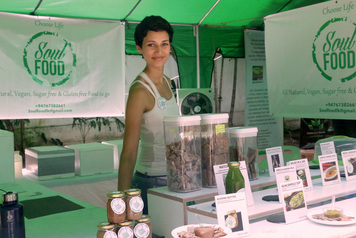
Tell people how they can find you on other days of the week. If you have a permanent retail location, advertise it. Bring business cards or brochures with your contact details, Facebook page, or website. Keep a mailing list sign-up sheet where customers can write their contact details.
The market attracts people from many backgrounds. Provide information in multiple languages whenever possible.
Consider offering bags, stickers, T-shirts or other items with your business’s name and logo. Let your customers advertise for you.
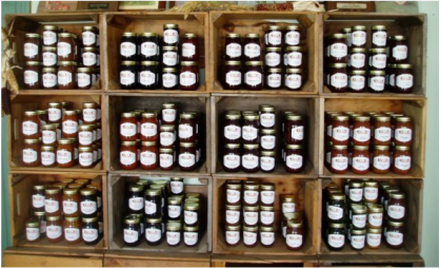

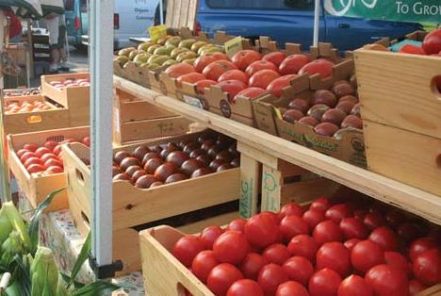
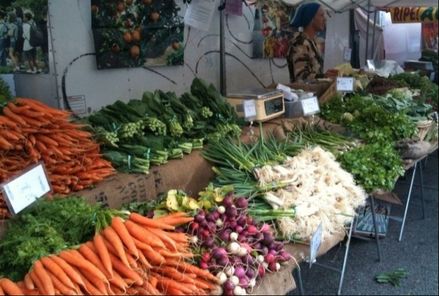
If possible, display products in attractive natural containers like reed baskets, cane baskets, or wooden boxes instead of cardboard boxes or plastic bins.
Tilt boxes or baskets at an angle towards the customer. This makes the product more approachable and appealing.
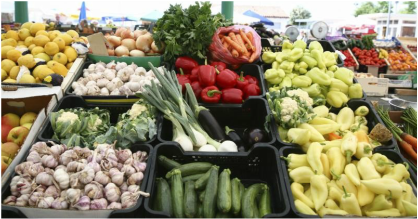
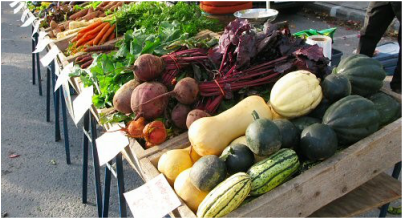
Clearly label all products with a name and a price. Make your prices easy to see. Most customers want to know what you have for sale and how much it costs without having to ask. Some people won’t even stop at your stall if they don’t see prices listed.
Beautiful labels will add to your overall display. Make sure your labels are neat and readable from at least 3 feet away.
Attach the labels well so they won’t fall off or blow away. Try to use consistent colors and fonts. Check your spelling and grammar
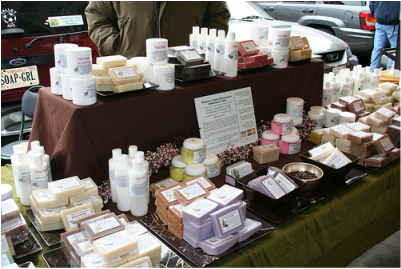
Include attractive facts about the product on your labels. Where was the product made or grown? How is the product good for the environment, good for society, and good for health?
Examples of descriptive labels include: organic certified, sustainably grown, ecologically grown, poison free, no preservatives, no trans-fats, all natural, sugar free, fair trade certified, recycled, natural dye, non-toxic dye, handmade, grown by small farmers, benefits war-affected women, supports rainforest conservation, good for diabetes, good for high blood pressure.
Whenever possible, include education as part of your display. Give examples of how to use a product. For food, provide cooking or serving ideas, especially for items that may be unfamiliar to customers. Select recipes that highlight your products and print them on paper with your business name, logo, and contact information.
Neatness is a huge factor in a customer’s perception of your stall and your business. If your stall is neat it sends customers a positive message about the quality, cleanliness and safety of your products.
Tables should be covered with tablecloths so that extra stock, personal belongings, or any untidy items can be hidden out of sight.
Move through the stall regularly to straighten signs and displays. Pick up any waste or vegetable scraps that fall on the ground.
Getting customers to buy is much easier when you have them inside your stall. If there are many people in your sales area, it will attract other customers. People are naturally curious. If they see a cluster of people gathering at a particular spot they will want to know what is creating the interest.
If you are selling food, offer samples to customers. Fruits, herbs, and vegetables can be washed, cut into small pieces, and served with toothpicks. Rice can be cooked and served on small pieces of leaf or paper so customers can taste the difference between different varieties. Jams, cheeses, and other prepared foods can be served with small biscuits
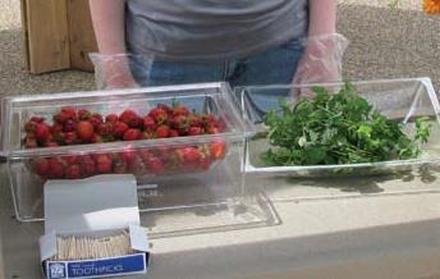
If you are serving food that is ready to eat, prepare it in a visible space so that other customers can see (and smell!) Serve the food in distinctive wrapping to generate interest (e.g. leaf plates). Including a space for customers to eat will attract more attention to the stall.
Organize demonstrations in your stall. For example, if you are selling handicrafts, demonstrate how they are made. Provide activities for children.
Make sure that you are inviting people into the stall. Do not block customers from entering. Provide enough space for people to enter and access your products.
“Power items” are popular products that attract customers and may be featured in advertising. Fresh mangoes, ripe red tomatoes, and rambutan are examples of power items for produce stalls. Power items should be in a visible area near the front to attract people to the stall. As the customer enters the stall to pay, they will see other products.
“Impulse items” are products that a customer does not plan to purchase. They buy it after seeing it displayed. Snack foods and small, lower cost handicrafts are examples of impulse items. These products should be placed near the payment area. Even if each impulse item has a low price, they can contribute significantly to overall sales.
The most visible color at a distance is yellow. Put your yellow products out front where they will attract attention.
Put products with different colors next to each other. For example, a mix of red, yellow, and green fruits and vegetables will attract the attention of customers. Red and orange in particular impact the eye and are retained in memory. Avoid putting all green vegetables next to each other.
Consider offering a “grab and go” section. Have some items already packaged, priced, and ready for customers on a lunch break or in a hurry. A vegetable stall could have a section with leafy greens that are pre-washed and pre-bagged. A food stall could have wrapped sandwiches or ready to go lunch packets.
Use a combination of loose bulk displays and pre-packaged displays. Customers have different interests and expectations. Some customers prefer a quick and convenient option. Some customers prefer to take time and personally select their products. According to market research, customers buy more when there is a choice of displays than if they are restricted to a bulk display only or a pre-packaged display only.
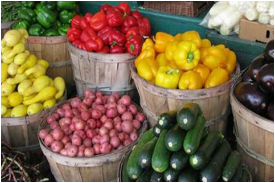
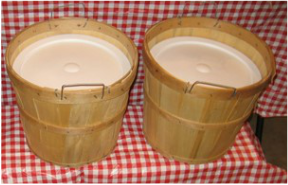

Keep your displays and your containers looking full. If you run low on a product, shift it to a smaller container to make it appear full and overflowing.
Another option is to add “filler” to a large container. For example, you could put leaves or paper or a box at the bottom of the container and pile the remaining product on top of it.
If you get very low on a product, you can tip the container over and arrange the products so they are spilling out of the container.
If you completely run out of replacement stock, then reduce the number of shelving units or the number of display units.
If you have lightweight products (e.g. paper handicrafts or leafy green vegetables), have a plan for windy conditions. Anchor them down so they don’t blow away.
It’s particularly important that food vendors come prepared for the heat. Plan ahead so that your fruits and vegetables look fresh and attractive for the entire market. In hot weather, display only a little product at a time and keep the rest in a cooler or insulated box. Bring a spray bottle and mist leafy green vegetables with cool water. Some vegetables can be displayed with their roots or stems in water, like flowers in a vase. If you have potted plants, remember to water them so they look fresh throughout the day.
Refrigeration equipment can maintain temperatures but most do not maintain a desirable level of humidity for fresh fruits and vegetables. Ice displays have the advantage of keeping the product cold and providing moisture that reduces product shrinkage and loss of quality. Bring ice or create cheap ice packs by freezing plastic bottles of water. Store or display your products on top of the ice. Remember to put a moist towel or other cloth between the ice and your products to prevent freezing and damage.
Wear cool comfortable clothing and remember to bring enough drinking water.
Make yourself visible. Be present whenever customers are in the area and wear something that identifies you as the person staffing the area. Considering wearing a name tag or a hat, shirt, or apron with your logo.
Many people choose to visit this kind of market because they want to know the people who grow, create, and make their products. Be open and welcoming. Smile. Make eye contact. Say “hello” to all your customers. Building relationships with your customers will increase your sales, and there is no better advertisement than the word of a happy customer.
Talking with your customers can help you identify new product ideas or new market opportunities. Keep a notebook to write down customer feedback and ideas for future products.
Know your business and be able to talk enthusiastically about it. Be helpful. Give customers information about how to care for and use the products you are selling.
If you have many people in your stall, acknowledge other customers in the queue to keep them there. (“I’ll be with you in a minute.”)
Reflect the overall Good Market principles. Don’t automatically provide a bag to a customer. Ask them if they need a bag first. Encourage them to reuse their bags.
You are part of the stall display, so pay attention to your physical appearance as well. You want to project a clean, responsible, honest image.
If you can’t be in the stall, hire good sales assistants and train them well. Prepare laminated information sheets with answers to some common questions. Every individual that works at your stall should be well-informed, pleasant, and customer-oriented.
Make friends with other vendors and help each other. If you cannot speak the same language as a customer, maybe another vendor can.
Make a drawing of your stall area so you can plan your display. It will help if you do this on graph paper or an online grid so you can create the design in scale.
Make a list of the items that you’ll be selling. Use this list to see how many baskets, boxes, and other containers you will need.
Make a list of what types of display material you have to work with: tables (length, width, height), baskets (how many, what size), signs, table coverings, racks, stands, etc.
Make a list of equipment that you will need to have in the sales area: scale, cash box, plenty of change, record sheet to track sales, calculator, bags or other packaging material, water for misting your plants and vegetables, etc.
Put together a small box with tape, scissors, markers, pens/pencils, paper, etc. for emergency repairs or last minute signs.
Set up your display before the market. This will help you see how the display will look, how traffic will flow and what changes might be needed. Opening day is not a great time to find out that your baskets don’t fit on the tables you have.
Invite some people that you trust to review your display and give you honest feedback. Sometimes very simple changes can make big differences in how customers perceive you and your products.
Keep records of your sales. This can help you plan for future markets.